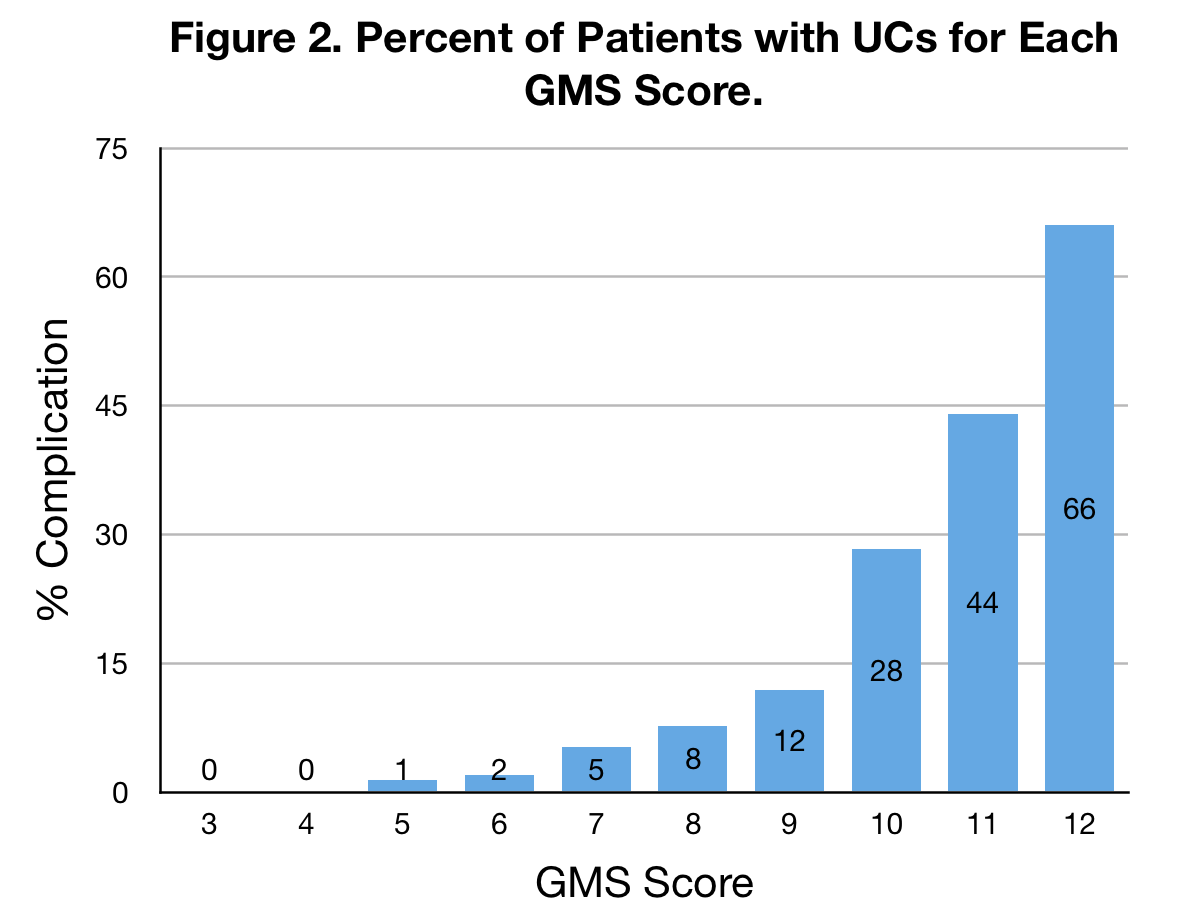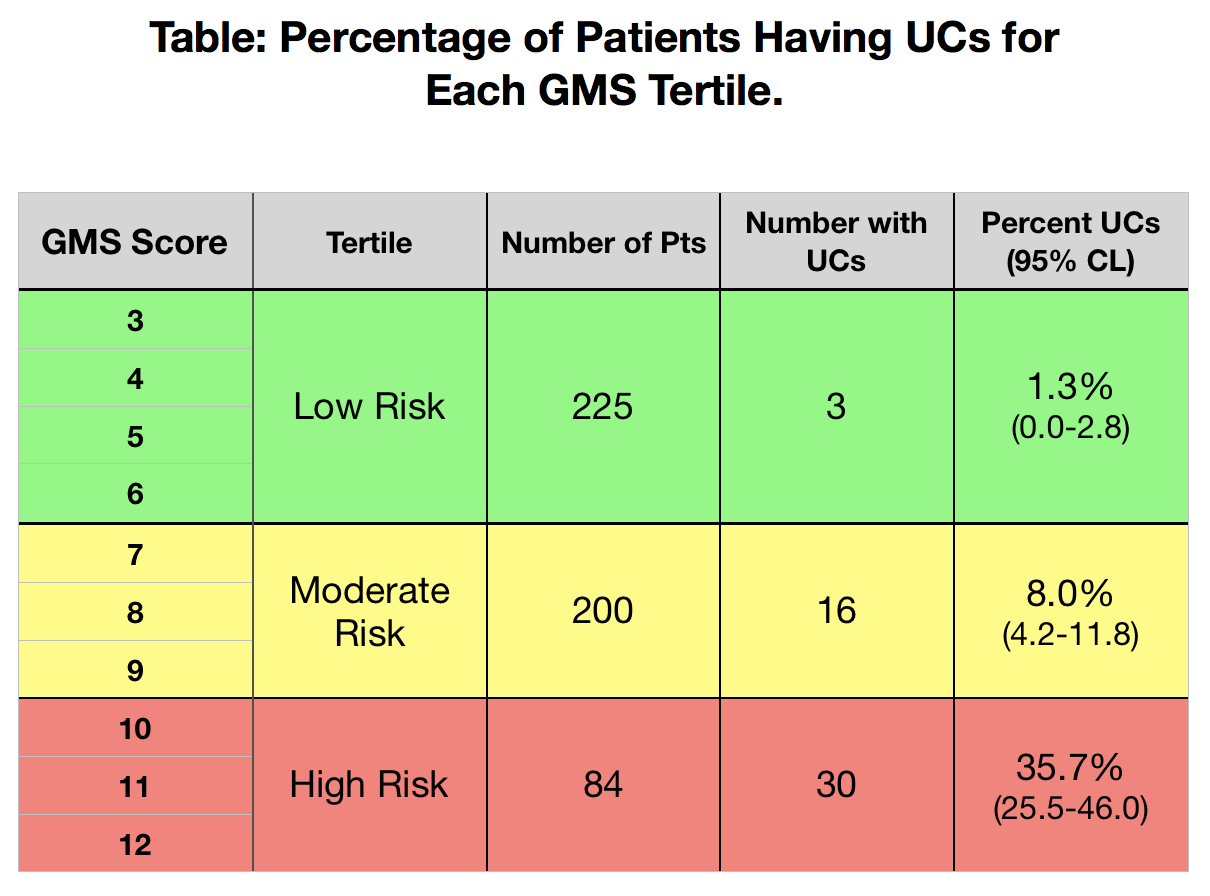Hypospadias Surgery In the Digital Age: Defining Severity With Numbers
Jonathan H. Huang, M.D., Edwin A. Smith, M.D., Andrew J. Kirsch, M.D., Hal C. Scherz, M.D., Wolfgang H. Cerwinka, M.D., James M. Elmore, M.D..
Emory University School of Medicine, Atlanta, GA, USA.
Background:
The use of descriptive adjectives (i.e. “proximal” or “distal”) to categorize the severity of hypospadias is a potential barrier to outcomes research. Even within contemporary academia there is no consensus definition for “severe” hypospadias. The Glans-Meatus-Shaft (GMS) Score (range 3-12) was introduced as a way to concisely and numerically grade the severity of the hypospadias complex (FIGURE 1). Herein, we correlate the GMS scores with the incidence of urethral complications (UCs) in a large group of children having hypospadias surgery. Further, we propose GMS score-based categories that may provide standardized definitions for low risk, moderate risk, and high risk or “severe” hypospadias.
Methods:
622 patients having initial hypospadias surgery were graded preoperatively using the GMS criteria. Six surgeons participated in this study and GMS scores were assigned independently. Pertinent data was collected including patient demographics, repair type, and the occurrence of UCs postoperatively. Patients were excluded from this analysis if they had follow-up of less than 12 months, underwent staged surgery, or had megameatus intact prepuce (MIP) variant hypospadias.
Results:
509 patients with a mean age of 12 months (4 to 96) were included in this analysis. Mean follow up was 42 months (12 to 73). Mean GMS score was 7.3. Repair types were as follows: TIP 374 (73%), TD 84 (16%), MAGPI/GAP 51 (10%). Overall, UCs developed in 49 patients (9.6%). The most common UC was fistula (77.5%). The percentage of patients having UCs is shown for each GMS score (FIGURE 2) and for GMS tertiles (TABLE). Mean GMS scores and UC rates for patients having TIP, TD, and MAGPI/GAP repairs were 7.8, 5.6, and 5.2 and 11.8% (44), 3.6% (3), and 3.9% (2), respectively. Eighty patients (21.7%) having TIP repairs were in the high risk tertile while <5% of patients having TD or MAGPI/GAP repairs were in the high risk tertile. Patients in the high risk tertile had a UC rate of 36% (30/84).
Conclusions:
The GMS grading method represents a standardized, numerical, and statistically useful instrument for describing patient cohorts and reporting surgical outcomes. The score correlates well with the risk of UCs following hypospadias surgery and may be useful across institutions. Risk following surgery is low (<3%) for GMS 3-6, moderate (~10%) for GMS 7-9, and high (>25%) for GMS 10-12. Defining “severe” hypospadias as GMS 10-12 is supported by our data. 


Back to 2018 Program




